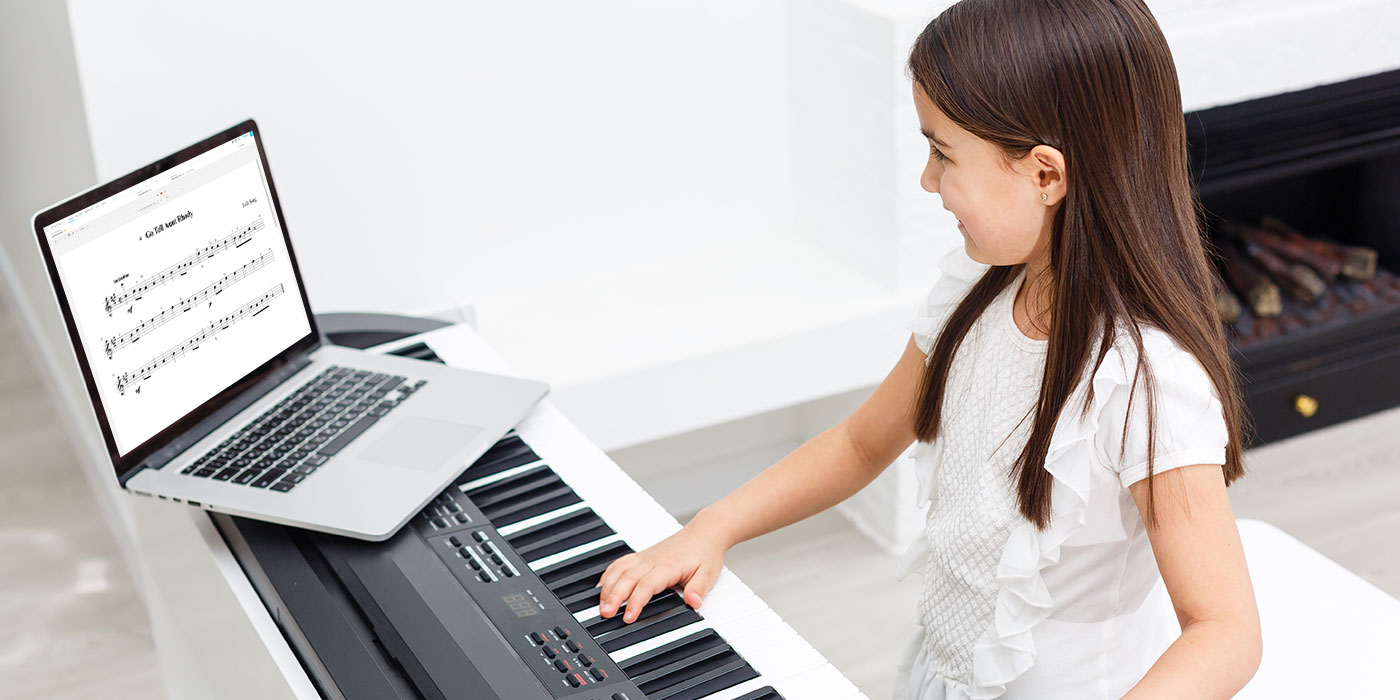
While nothing will ever replace our in-person contact, group rehearsals, and performances, there are things we can do to keep students actively learning. While we know we can assign thousands of assignments and have students perfecting scales, arpeggios, sight-reading, and performance works, maybe we can also encourage and develop their musical curiosity.
Play One, Find One
Using SmartMusic, send out an assignment piece and ask them to perform it, but include bonus points for finding another piece that has similar characteristics, or a polar opposite. They can share that information with you in the comments box. Alert students that the comment box is worth more than the performance. Using the comments box to get students to give you feedback or self-evaluation is one way to get them thinking more critically.
Create a musical scavenger hunt
How many pieces are in SmartMusic by composer Robert Sheldon? Pick three and listen to them. Which one would you like to work on when we get back together? Ask your students to evaluate new pieces, styles, solos, etc., and provide that information in the comments box. You will have to assign something for them to play in order to get the assignment structured the way you want it to unfold.
SmartPicks
Chris Bernotas just put together a list of SmartPicks for Band and Orchestra. Reward students for playing through 4-12 all, you get the idea. Have them share with you with pieces they liked playing. Getting your students to share their thoughts and ideas is good for you and them. Giving choices and creating ownership in decision making can make for a lifetime of music learning.
Sight-Reading
Use Badges to reward your group for sight reading new music daily. The 10 levels of sight reading material that are in Smartmusic could be used for setting up rewards for moving up a level. Getting X amount of level one correct allows you to move to level two. Create your own American Ninja Sight Reading warriors.
Chamber Works
Use this opportunity to assign chamber works—there are many duets and brass quintets in SmartMusic. Have your brass players work with the Canadian Brass from Easy to Advanced titles and listen to the improvement in their individual performance skills. Have your flutes try their hand in the Suzuki Violin Duets and let your string players have some fun too. Have your students try their hand at the Power Of Two Duets and learn how to interpret jazz. We all know that small group work develops musical skills faster than anything.
Long Tones
We all know the value of long tones for developing embouchures and tone quality. Look at the new Long Tone pieces called LoFi Long Tones. Another great resource is Foundations for Superior Performance. Work on the chorale and intonation exercises, send the assignments at a very slow speed so students can really work on their sound and how it matches the accompaniment.
Festival Solos
Look at Festival Solos by Neil Kjos for a collection of beginning solos. Have students listen to the collection and choose one they would like to perform. You could also select a solo that you think your student may like. In this collection of solos students will not only get the solo material to work on but will be guided through several progressive lessons to help master and refine their performance.
Pop Music
Have students look at Pop music titles. Using the Carousel in “Find Music” allows students to explore the Pop category and pick a piece they wish to work on.
Improvisation
How about some beginning improvisation? If you filter just the jazz ensemble titles and type the word “solo” you will find all of the jazz charts that have solo accompaniments for your students to work on. Build progressive assignments that get them to learn the theory such as play through the chord changes playing the roots of each chord. Ask them to sing that. Ask them to listen back to their recordings and see if they are in tune with the chord. There are so many paths to take in this area of music education. Have students use the rhythm of a simple song they know as a guide for building their improvisations. Ask them to tell you in the comments box what the tune was and see if you can hear what they were trying to accomplish.
I am sure you have already thought of a creative way to use SmartMusic with your students that will encourage exploration and be a fun creative way to keep students engaged and playing music while they are at home. We would love to hear what you’re doing so that we can all expand our teaching recipes to offer more creative experiences that help grow our students.
